Philadelphia Orchestra dumps tie and tails
OrchestrasThe orchestra has modified the international white tie and tails dress code, which dates back to the 19th century.
From now on, men will wear black suit, black shirt, and long black tie. Women can appear in long black dress, skirt, or pants.
More here.
The New York Philharmonic is doing something similar while away from base this season.
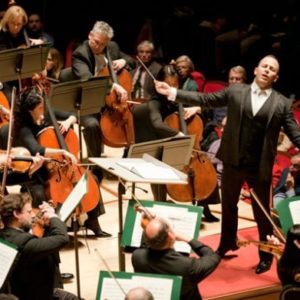

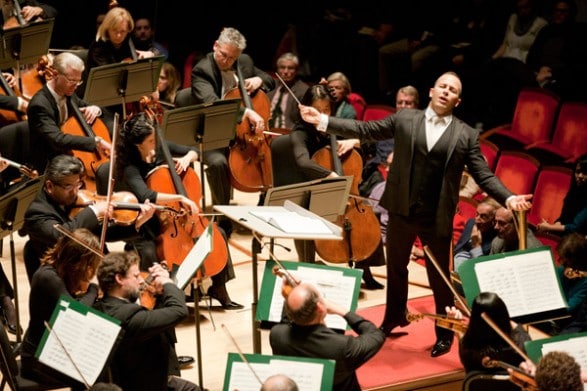
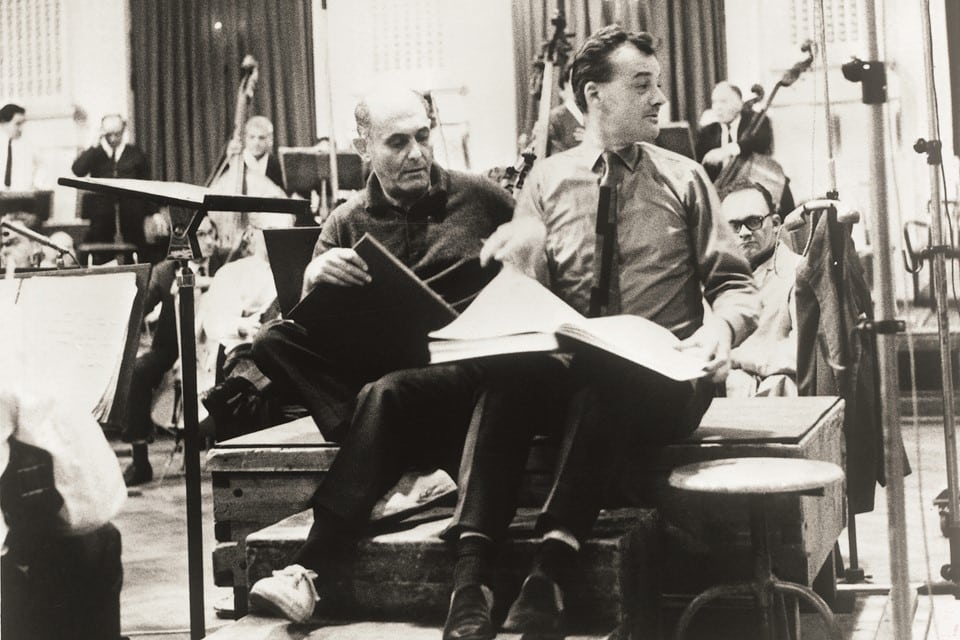
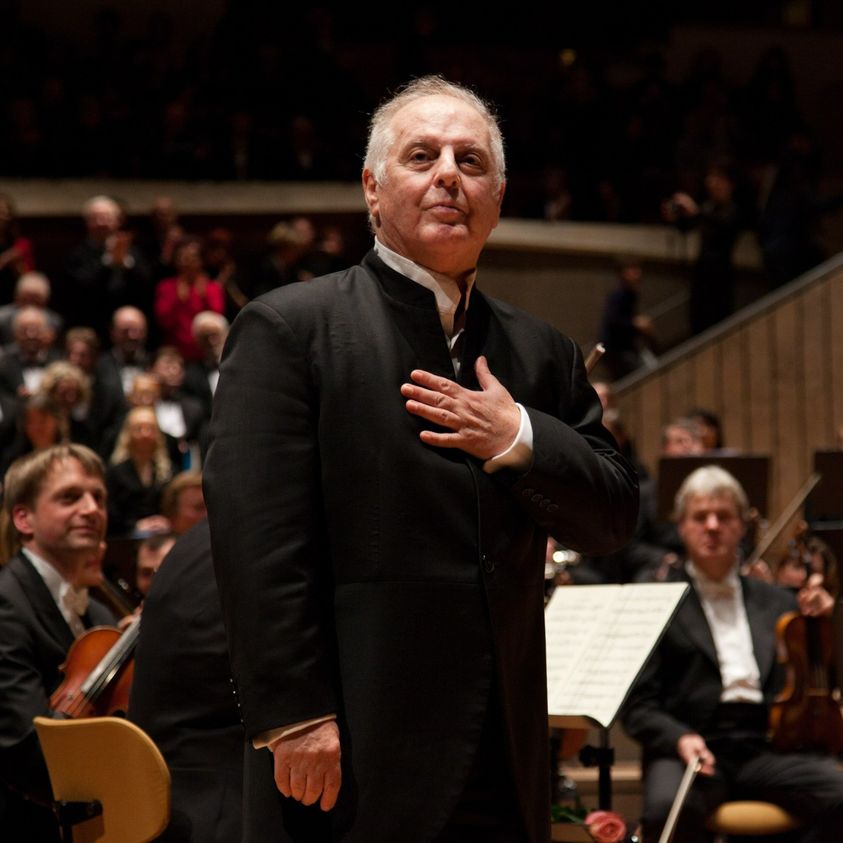
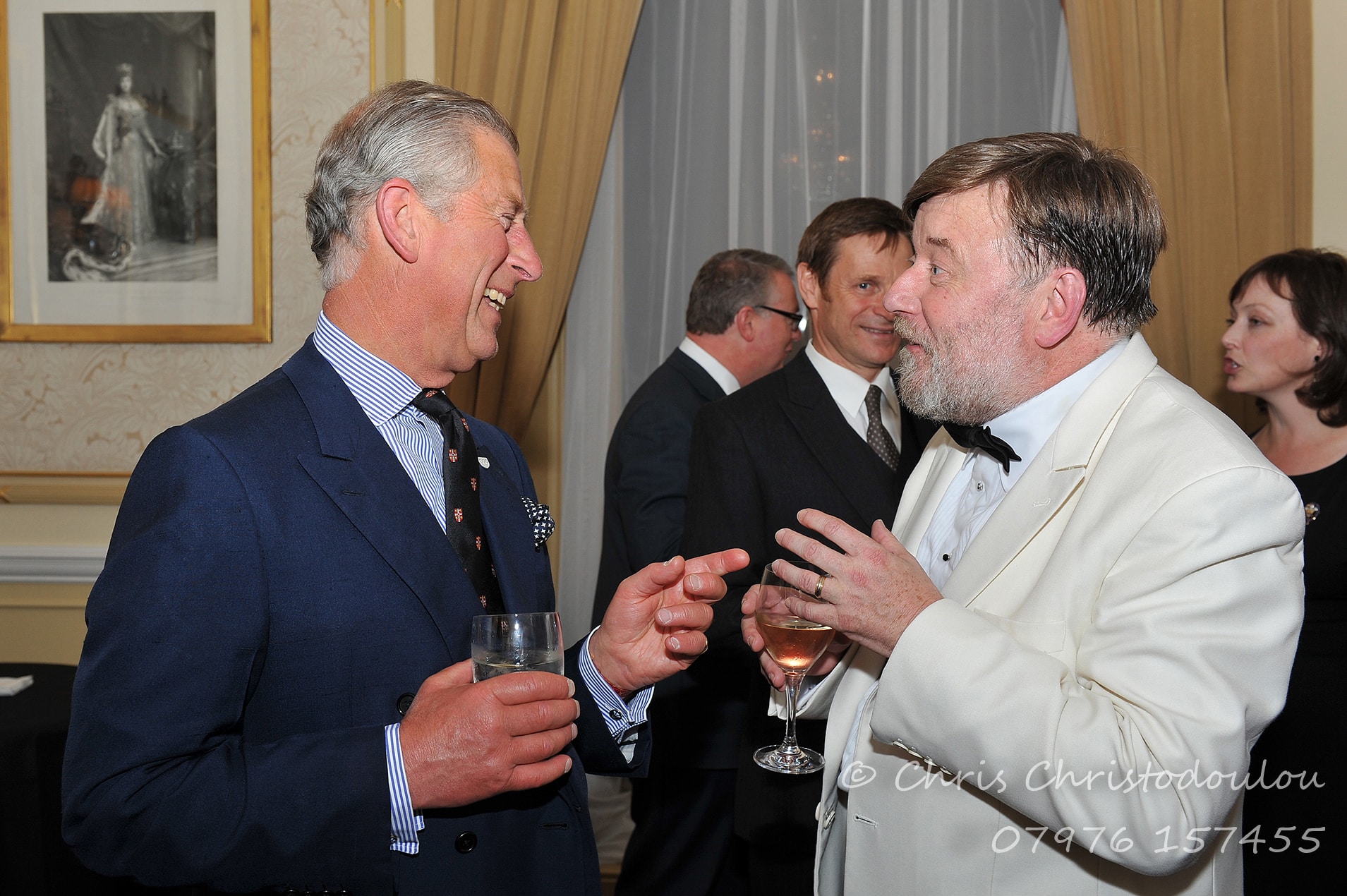
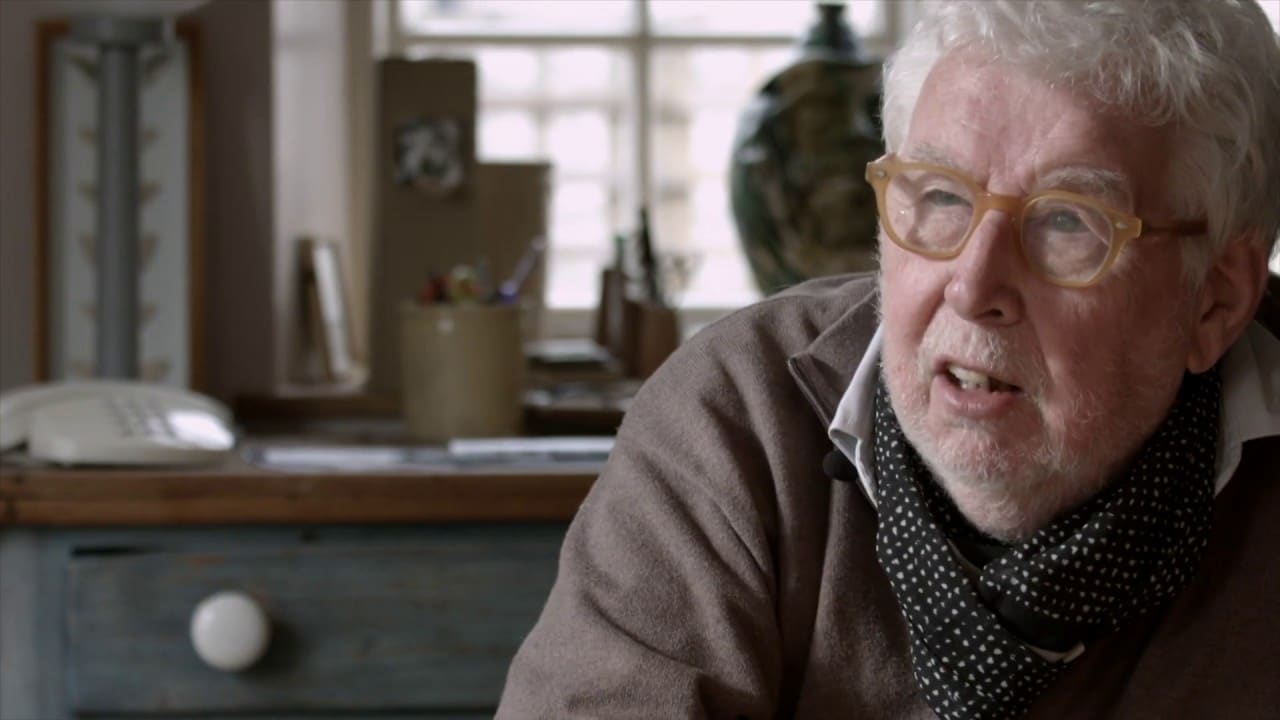
I always thought the white tie & tails for all players is nicer, and long black dresses for the ladies. Tails stress the fact that the music is old, and still alive and kicking in our own time. It still has something of the old world glamour. Why doing away with things that have proven to be so much better than contemporary product? It is the fear for being seen as ‘conservative’.
Next trend will be: all players in sports gear and conductor in jogging leggings, so that audience will understand Mozart better.
White tie and tails harkens back to a time when waiters wore them. The origins are based in the belief that musicians are in the servant class. A change of concert attire is a step towards musicians being viewed as artists rather than “the help.”
I don’t think so. White tie & tails developed from the time of the French revolution, adopted by the bourgeois third estate, the class which was taking power in society. Later-on the dress code developed as the most formal and elegant dress code for gentlemen at special occasions.
https://en.wikipedia.org/wiki/White_tie
https://en.wikipedia.org/wiki/Tailcoat
Stuck in the past again. Servants wore wt&t to set them apart from the upper class gentlemen who wore tuxedos. They couldn’t have any gentle ladies mistakenly talking with the wrong class. Orchestras started going to tuxedos when the public wore suits and ties. That was still a social separator. Those who cherish outdated class and social mores will always reject positive change.
A comment from someone who will always refuse to be informed or to read himself or visit the sources. There’s a word for it but that would be so unfriendly to come-up with.
Check the Wikipedia article about tailcoats, and look at the pictures of all the dignitaries wearing white tie and tails at state dinners etc. Whatever the help is wearing, it’s not that.
Wrong again. White tie and a suit of tails were standard ball attire for “upper class” folks well into the 1990s. The members of the Philadelphia Orchestra will now look far more like waiters and bouncers than they did before.
I blame Downtown Abbey. And I think we should move on from white tie – musicians shouldn’t look like servants.
Actually that’s wrong. White tie and a black tailcoat were standard attire for all formal occasions until relatively recently. A great tradition from the 19th century.
Not so. The audience, at least in the expensive seats, dressed the same way.
Says someone who I suspect has never had to wear them in an unbearably hot concert hall or trailed them around on tour getting progressively more grubby and smelling awful by the day.
I suspect that the exact same thing will happen, regardless of whether the garments in question are black suits, or black tails
Simple black suits can be obtained much cheaper than tails, allowing a player to alternate between several sets, and hopefully, to have them laundered from time to time.
Perhaps we should also talk about the white pops jacket. Anyone who’s ever played in an orchestra can tell you that from close-up, most of them are no longer any recognizable shade of white.
Thankfully all the groups I play in have ditched white jackets.
White DJs are the get-up of fourth rate cocktail barmen, con-men and 4th division footballers down on their luck. ‘nuff said
Hear hear! Well said.
I’ve been wearing the damn things on and off for 50+ years and relish the occasional gig in plain black.
Tails: to order from specialist tailors; hot in summer; draughty in colder concerts like cathedrals etc.
Plain black: readily available at any high street or online store. Comfortable and easily washed and cleaned.What’s not to like?
I have no desire to look like a Victorian butler and I sound just the same in comfortable clothes.
I’m in a small orchestra that doesn’t tour, but tails are incredibly uncomfortable. They’re made for standing around a ballroom with a glass of champagne in your hand, not for playing an instrument. If you get a jacket that’s comfortable for playing, then it makes you look like a hobo when you’re not playing (shoulders too big, sleeves too long, etc).
I still remember hearing the Concertgebouw Orchestra in Boston in 1990 — there was some problem with their flight, so it was late and their luggage didn’t make it with them. They had to perform in whatever they wore on the plane (or carried with them). Chailly conducted in slacks and a sweater; the concertmaster wore tails — I guess he must have carried on a garment bag. The rest of the orchestra was dressed in anything from jeans to business attire; hardly anyone was dressed for a concert.
But unbelievably, this great orchestra still knew how to play like a great orchestra without their great-orchestra costumes! It was a revelation! I always thought musicians were powerless without their formal attire — that it was a necessary part of their paraphernalia, like magicians and their wands. (This is sarcasm. I’ve always thought tails were ridiculous.)
I wish orchestras could wear something comfortable like all-black (turtleneck, black pants, black shoes/ full length and long sleeves for the women). Comfortable, doesn’t look ridiculous in absolutely every other social circumstance, doesn’t distract from the music… but no, audiences need their musicians in 19th-century ballroom dress so they’ll know they are at a concert.
Sigh.
I am also a professional musician and always found tails to be much more comfortable than suits under normal conditions. While it is true that they can be stuffy in hot weather, so are suits..Tails hang more loosely than suits. For violinists
they provide more flexibility for the arms, especially the bowing arm. Moreover they are more flattering for those musicians whose physiques are not so trimly built. A suit jacket is more confining.
I’m dreaming of no jacket at all…
Suits are not nearly as hot as tails. Less lining and a lighter weight of wool. Hell, you can even get a suit in tropical weight wool, tails not so much.
i think it is a good move. and
more comfortable for the players.
the tails remind me of a marx brothers film.
excellent . the tails remind me of a marx brothers film
Why should a concert hall be so hot? And how much cooler is a jacket without tails?
Count on good old John to be the sole standard bearer for reactionary Pavlovianism.
Thank you for demonstrating my point.
Many people are so obsessed with the idea that being up-to-date means slashing anything that survived from ages of civilization, that they no longer see things as they are, but frame them within the narrow context of a historicist conformism. The term ‘modern’ has no quality definition, but is merely the description of ‘now’ on the time line. History does NOT develop inevitably to better things, so some scepticism as to enthusiasm about ‘new’ is only rational.
It’s impossible to play many instruments in a properly fitted tails jacket. It’s simply too tight in all the wrong places. Plus, one has to keeps fussing with the tails part so as to not be sitting on them, which makes it worse. Get modern.
Tails are specially made to be handled with ease. Pianists flap them backwards when they sit down. Orchestral players flap them sideways when sitting down. The short cut at the front offers more space than any other type of jacket. Singers move more freely, breathing gets easier. If Yuja Wang were a man, she would wear tails. Grow up.
But the time in the past deemed as worth preserving is arbitrary. Your argument would work just as well for embroidered silk waistcoats and powdered wigs.
‘Our heritage is given to us without a testament’, said French poet René Char. This means we can choose from the past what we think is worth preserving, and discard other things. There is no hard, scientific rule, outside of our own existence, to rely upon. We have to try to find quality standards ourselves, and in that process, we reveal what kind of people we are. Therefore this thread is very instructive.
White tie & tails for the concert stage, truly formal, is both uncomfortable to play in and expensive to maintain. Tails are heavy, with lots of lining. A decent tux shirt will set you back at least $100 and orchestral players require many in their wardrobe. Proper patent leather shoes, studs and cufflinks… it goes on and on. Recent changes to tax law in America make it impossible for orchestra players to deduct these expenses. Black suits are more contemporary in look, lighter weight and easier to perform in. That uniform is more likely to also be worn for chamber music concerts and other engagements.
Thank god. Useless, expensive relics of the past.
No: practical, expensive symbols of a highly-developed civilization, the same civilization that produced the mainstay of the classical music repertoire.
You do read your posts before you hit send, no?
I often try to stop this sort of thing but am pushed away with some rude wording like [redacted]. I wonder whether there’s not a better way of relaxation!
Sally
Yes, expensive and impractical. The 19th century is over, stop living in it!
This would also mean stopping to perform all music from, say, before WW II. Imagine what that would mean for music life.
By that argument, perhaps orchestral musicians should also adopt the personal hygiene practices of past centuries. And why not arrive at the concert hall on horseback? While we’re at it, maybe we should also resume socializing, eating, gambling, and smoking in the concert hall. All of this will no doubt help us enjoy the music more as it was originally presented.
I, for one, would not miss wearing the silly, stiff, uncomfortable, (not to mention usually long-unwashed), penguin suit in favour of some more modern attire.
That being said, some years ago my local orchestra attempted an informal, “come-straight-from-work” series at 17:00, where the uniform consisted of blue denim shirts tucked into brown khaki pants. Needless to say, it was utterly ridiculous, and it didn’t last long.
We tried something like that once where the uniform was blue jeans plus blue denim shirts with the sponsor’s logo on the chest pocket. We looked like a bunch of convicts on work release. I think it only happened for that one single concert.
Impractical for performance (although musicians have made do for many years).
Sounds ghastly.
Muti would sooner shave his head than lose the tails; over his dead body (clad in Armani, of course) will Chicago change its uniform.
Black tie, shirt and suit makes you look like a gangster. While some people might find this desirable, it’s actually just bad taste.
Agree. What was wrong with a white shirt at least.
61 comments on clothing?!
It seems sensible enough, if it really does diminish the feeling of exclusivity. When I lived in London, I used to worry about the safety of players travelling home on the Underground in white tie and tails, carrying an instrument. They seemed obvious targets for violence and/or robbery.
Never heard of changing rooms? I don’t imagine athletes go home in kit after a match.
Your sarcasm demeans you. Every time I went home on the Underground from RFH in the 70s and 80s, I saw several players in white tie and tails carrying their instruments.
That was 50 years ago
And casual clothing would hide the instrument somehow?
I’m sorry that it’s necessary to spell this out to you. They would become less provocative targets for thugs who believe themselves to be fighting a class war.
You presuppose that adequate backstage facilities exist in concert venues.
Perhaps they do, at some orchestras’ home venues … but probably not at the crappy high school auditorium used for the obligatory run-out show out in the distant suburbs!
Our home hall for many years included ZERO backstage facilities. There was a backstage with trestle tables, and that was all.
Then we moved to a new hall (a refurbished art-deco movie theater), but the planned annex that was going to have a rehearsal room and locker rooms had to be scrapped for budgetary reasons — it’s now a parking lot — so there’s a general dressing room/lounge for men and one for women, each the size of a large living room. A couple of intrepid (or oblivious) men change their clothes there after concerts, but for the most part it’s enough of a hassle just to find somewhere to put your coat. There are no lockers. The policy regarding valuables is “just don’t bring any.” (There is a storage closet for purses. After concerts there is occasionally a small crowd of women waiting for the person with the key to come and unlock it.)
When we perform with chorus, the chorale uses the venue’s kitchen as their coatroom/ warmup room.
Not quite a crappy high-school auditorium, but probably not close to what V. Lind had in mind.
If you play in a fancy enough orchestra, with a fancy enough hall to have a changing room, then that’s a very practical solution. Or you can change your clothes in the [crowded, smelly] men’s room after the show… but that takes real dedication.
Looking like a Victorian state funeral should get the kids flocking in.
People suffering from that association should refrain from visiting concert halls.
They are refraining, John; hence the attempt to appeal through attire. Not sure it is the crux of the issue, but it might be a start.
Would Mahler sound more accessible in jeans?
Not to me, but perhaps to someone who spends every day in work clothes and would like to wear more relaxed attire for an evening out.
The subject was the dress code of the players, not the audience.
I’m referring to the sombre, all black alternative.
Where’s the claimed improvement?
Why is there even a gender-based dress code in the 21st Century?
First of all, orchestral players are not models, they are average looking folks you see on the bus, so I really don’t care what they wear, one way or another.
Indeed, I try as much as possible to avoid looking at the man-spread of the violinists/violists, lol. (Seriously, is that part of the dress code, you have to spread your legs out as much as possible on stage? Remember, your crotch is at eye level with the audience in the front rows dudes!)
Second of all, a gay music director should be more vocal about these things. Just saying.
Why should a gay music director be any more vocal about these matters? Please explain.
As far as the “man-spread”, just try sitting and balancing your body on a not-too-comfortable chair for two hour plus. It’s very physical and tiring.
Re “man spread” of violinists and violists: that way, you keep your back straight and the trajectory of the bow goes between your legs. You would have a horrible backache if you kept your legs together and tortioned your back to do so.
and maybe not just a backache 😮
The comment of a man obviously very comfortable with his sexuality.
How onbelievably revolutionary: Klemperer did away with it all in his final concert with The Philharmonia in sept. 1971;
The rule ought to be: I’ll dress up if you the audience dress up.
I happened on a few photos of this year’s Met opening night on social media, and I was like, WTF?!, it’s great to attract a new and younger audience, but since when did opening night of the opera season become a daytime baseball game at Yankee Stadium?
Tennis fans dress better than opera fans. Basketball fans sitting courtside dress better than these opera goers.
So the new rule is: If you respect me, I’ll respect you, let’s both come in suits and dresses.
Good for Philly. Whenever I see an orchestra in white tie and tails my mind goes to Downton Abbey and their elaborate dinner rituals, not participants in a 21st century art form.
You got it wrong. Very wrong.
And besides, how is it possible that such a thing as Downton Abbey has been so wildly popular? Or Austen’s ‘Pride and Prejudice’?
https://subterranranreview.blogspot.com/2015/08/aesthetics-and-misery.html
Obviously, modern people get occasional bouts of nostalgia for a time when aesthetics were simply better.
This is nothing new. LA Phil has been wearing the black shirt+jacket+long tie for a while. So has NACO in Ottawa. And New World Symphony. Please keep adding to the list…
Los Angeles Chamber Orchestra and the LA Master Chorale.
The Orchestra of the Age of Enlightenment have wherever possible been doing the same minus the tie for the past 30 years or so.
Bravo! This is part-way there. Now get rid
of the tie so one doesn’t burn up on stage.
About time…dreadful stuffy relic.
The LSO have ‘modernised’ their attire too, matching nicely with their virtue-signalling porous cotton fabric facemasks of highly questionable medical benefit (unique amongst all London orchestras)
I’m willing to bet this will have zero to little effect on ticket sales and attendance. But conducting in a t-shirt? What’s next-ripped jeans?
Yannick’s wardrobe choices on the podium lately remind me of female track suits from Lululemon. I can’t take him seriously. He’s trying waaaaay too hard
I’ve attended NY Phil concerts where other patrons were wearing matching his&hers jogging suits. And they were sitting in the most expensive seats, so it’s not as if they didn’t have the money. I’ve also seen muddy/dirty work boots, dirty, ripped jeans and stained shirts on concertgoers. Maybe what is needed is a return to standards of dress in the concert hall along with proper enforcement of those standards? What Philly Orchestra, and others are doing and/or proposing is silly and besides the point. No one will be attracted to the concert hall merely because the musicians onstage look like audition rejects for the part of ‘Penguin’ in the Batman movies.
I think the players should all have numbers on their backs, like a sports team. At the gift shop and online, the orchestra can sell jackets and shirts with the number of your favorite player and you are free to wear that piece of apparel to the concert! Bahahahaha! BTY, in the early 90s they had trading cards for orchestra musicians, with stats too. It was a promotion by record labels. Sadly, it never took off. I kind of liked the idea.
I hate playing in tails, so uncomfortable, hot, and frankly challenging to play in. That said, is there anything more bland than the black suit + black shirt + black tie look?
All black should stay in the new music, Baroque music, and high school/conservatory world. It’s so boring that it highlights whatever qualities tailcoats have!
When working on my music, I always wear white tie / tailcoat. It is most practical: the highly uncomfortable feeling keeps you awake and the stiffness of the standing wing collar forces you to think along logical and disciplined lines, with the right modulations. It is only under the inquisition of discomfort that the best music is born.
To make your music even better, skip the wt&t and wear a cilice. You will be known as John the Borstlap.
No, that is not uncomfortable enough.
By the way, I wanted to add that I also use composing shoes: leather patent shoes that are a size too small. The endurance stimulates the best inventions. There’s a story that Stravinsky, who worked on the Sacre in a room as small as a broom cupboard, and on an upright little piano, also wore too small shoes and you can hear that in the music. (Robert Craft suggested that the miserable piano tuning returned in the many major seventh and ninth in the woodwind doubling in the score, and that the painful conditions led to title the 2nd half ‘Le Sacrifice’.)
I can well imagine they have you in a white jacket…
A uniform in tails and white tie help audience to focus, something that confirms our expectations and not as a jarring distraction.
This comment helps confirm my theory that audiences generally don’t hear with their ears but rather their eyes.
As we live in the 21st century, it would appear to have dress that reflects the fact. I believe in musicians looking smart but a suit appears fine.
Why would classical music performers have to demonstrate the age in which they, and the audience, are living? Don’t audiences know?
About time! It’s a very sleek, modern yet conservative look. White tie and tails look absurd on anyone these days; unless you’re playing for Andre Rieu. My local orchestra (Tucson Symphony) made this dress code change a few years ago. I like it.
I can’t remember the details, but there was a brouhaha back during the Sawallisch era when they changed the direction that the orchestra would face when receiving applause. Oh how things have changed.
Yes, nowadays a lot of orchestras face outward when receiving applause. To me, it still looks like something from some Communist country’s music ensemble. Still not a fan of it….
Those who agree with the “new Philly look”: musicians–
those who don’t: everyone else.
It’s always more relaxing (for men) to play morning dress rehearsals without being dressed up in tails. Maybe women don’t feel the difference as much.
Nowadays, most Soloists don’t even adhere to the dress code of the orchestras they play with. There must be a reason….
You could also look at it this way:
Those who agree with the “new Philly look”: those who do the actual work.
Those who don’t: those who don’t.
…or not.
(By the way, morning dress rehearsals are not conducted in “morning dress.” Dress rehearsals are not conducted in performance clothing. I think you were probably joking, but just in case.)
I found something from this ebook which gives some interesting perspective on the subject.
“Penguins and Petticoats…
Musicians in orchestras did something during the nineteenth century that has been a good compensation for job dissatisfaction. It might not resolve salary disputes. But at least they got to keep the tux. The frac of the 1800s, white tie and tails, did not evolve as the performance costume, while the audience and its economics changed fashion each season. In fact, the only uniforms not to change in 200 years are those of an orchestra musician and a priest. So there we have it. Why?
The artist became hero, and something changed in the equation between the orchestra and its public. Whereas during the seventeenth and eighteenth centuries musicians often wore the uniforms of their aristocratic patrons, with the emerging bourgeoisie the uniform evolved to mirror the cultural identity of the community it served. Once Wagner and Liszt came to dominate the Romantic ideal, it all changed. Lingerie was thrown on stage at Liszt’s recitals. The public began to regard the artists as messengers of some holy myth. The orchestra was the beneficiary, as the instrument of their operas and symphonic works. The white tie became as pure a symbol of divine grace as the white collar of a priest. The clergy are the messengers of the holy word. Orchestral musicians are the messengers of musica celestis, the chorus of the heavenly kingdom. So, though it might be an interpersonal inferno in any average orchestra, they think they are all angels, and they want us to think that too. A white tie cannot protect an orchestra from a bad review or boos, just as the white collar cannot protect the clergy from the law.
The public knows the difference between good and bad and right and wrong. They know virtuosity from mediocrity. Unfortunately, not all orchestras understand this. Where does that leave us then for the future, for the development of new audiences? Can we keep their trust and interest? After all, the purpose of making music is not simply the music itself but to develop an audience to come and hear the instrument that makes the music: the orchestra. To make it once again a relevant part of life, as it was in the good old days, before TV and the internet.
There is an example that might work. During the recession of the 1980s, the famous luxury product manufacturer Tiffany nearly closed. As the public changed habits, so too did Tiffany need to adapt. Instead of maintaining the expensive, exclusive, glamorous image of Breakfast at Tiffany’s, the company created a campaign to promote its products for every event in the life of its customer, from birth to bar mitzvah, from graduation to marriage, from anniversaries to funerals, all for $50 and the little blue box. Silver rattles, crystal candelabra, silver pens and the like restored their market share by changing the paradigm of their product. No longer was Tiffany for the rich. It was for everyone. Classical music could learn from listening to its public.”
https://www.amazon.com/Symphony-Orchestra-Crisis-Conductors-View-ebook/dp/B00EZBK8VQ
Nice, but classical music is not a market commodity and the concert world is not a business, that it has turned into a commercial ‘industry’ is one of the great undermining forces, NOT how players look on stage.
The aim should never be to make profit. Classical music is a common good and thus, the idea that it is an industry, is greatly harming. Let Tiffany solve its own problems, but don’t make a comparison with classical music.
White tie & tails for the concert stage, truly formal, is both uncomfortable to play in and expensive to maintain. Tails are heavy, with lots of lining. A decent tux shirt will set you back at least $100 and orchestral players require many in their wardrobe. Proper patent leather shoes, studs and cufflinks… it goes on and on. Recent changes to tax law in America make it impossible for orchestra players to deduct these expenses. Black suits are more contemporary in look, lighter weight and easier to perform in. That uniform is more likely to also be worn for chamber music concerts and other engagements.
Next they can wear a grey T-SHIRT and and an old pale blue short pant like their conductor.
Black jacket, black shirt, and black tie? They’ll look like mobsters or drug dealers. Awful.
It’s a kind of burka – making the player invisible for predatory exercises.
Everyone forgets Bruno Walter back in the late 50’s & early 60’s when he wore a Nehru jacket that tried to inspire dress change.
Of course they forget. They want to.
Just like everyone has forgotten Seiji Ozawa and his turtlenecks & love beads: https://simpsonsmusic500.files.wordpress.com/2016/01/3-ozawa.jpg?w=584
And Zubin!
Barenboim wears nice suits but
2 sizes too big.
He takes his future meals into consideration.
I’m in favor of attire that is practical and that encourages the audience to use its ears more than its eyes.
The amount of misunderstanding here is astounding. I’m a fan of updating the anachronistic attire, but the many false assumptions about whether that’s good or not, or the debates why they started in the first place are fascinating.
First, tails are a relic of the time in the upper class when evening dress meant one of two things – white tie and tailcoat for standard/formal functions, and dinner jacket (tuxedo) and black tie for anything informal. Musicians in orchestras began wearing white tie and tails, because that was the standard evening dress at the time. Servants often had some version, usually stylized, of the same, just like today’s formal restaurant staff wear some version of jacket and tie. Wearing white ties and tails today outside of the concert stage is reserved for only the most formal occasions, and has nothing to do with what servants wore in the past.
Second, for many string players and pianists, tailcoats allow more flexibility in their torso, especially arms, as their instruments require. As for cost and maintenance the difference is negligible. Many musicians don’t assign the baggage of discrimination or servitude or whatever nonsense, and simply view wearing tails as part of a tradition, and the white tie and tails is a uniform symbolizing that tradition, nothing more.
Indeed. But what one sees here, is the pavlov reactions of people who are encapsulated within a narrow idea of ‘modernity’ like a medieval superstition.
“Musicians in orchestras began wearing white tie and tails, because that was the standard evening dress at the time.”
Time for change?
“For many string players and pianists, tailcoats allow more flexibility in their torso, especially arms…”
Are you a string player? Tailcoats do NOT allow more flexibility.
“Many musicians don’t…and simply view…”
Do you really think you speak for all musicians?
Now that’s astounding.
To be fair, he did say “many,” not “all.”
OK, remove “all” from the question. No answers.
Whatever the orchestra is wearing, perhaps those so concerned about it as audience members should re-evaluate their relationship to the music being played.
Watching it right now, I have to say: the orchestra looks great in all black – music is the focus of attention as it should be – but YNS looks rather ridiculous in whatever it is he is wearing. He is a fine musician but this outfit is a major miscalculation.
I don’t care how old-fashioned and stuffy I may sound; Yannick’s pants during this concert were undignified, especially given the occasion.
I also disapprove of going from another piece (the Habibi work) right into Beethoven’s fifth with only a minor pause. The former should get its own recognition and the famous opening of the latter lost a lot of its impact. YNS was probably trying to link the two works in some way or the old era with the current. It was a misguided effort.
I’ve been more of a Yannick defender than one of the many haters on here. But a few more stunts like this and I may re-think that.
I hadn’t seen a picture, and initially thought “Pants? What could have been wrong with his pants?” Then I did an image search. Hoo boy.
I still can’t tell if it’s supposed to be camouflage or a floral print (and I’m not putting any more energy into figuring it out).
(A picture, for those of you: https://www.inquirer.com/resizer/KOmZ2jWe-DhHHjRl9YNUZgysEO4=/760×507/smart/filters:format(webp)/cloudfront-us-east-1.images.arcpublishing.com/pmn/ZXX2YML4XFEV7FGA4YSA64Y6RA.jpg)
Now, with all my ranting against white tie & tails, I still think concert clothes should not be an attention-grab. Soloists can wear what they want, but in my opinion (and you can tell I’m not a conductor) the conductor is part of the ensemble. He or she should dress pretty much like they do.
The pants look comfortable, I guess? So they would have been just as comfortable in black.
I guess sometimes you have to see somebody cross a line to figure out where the line is.
YNS’ pants in that picture look like he had just come from a very wild Italian meal.
It’s the rare occasion that Yuja’s dress is upstaged by the conductor, but last night she wore a tasteful and relatively understated black dress, while he wore pants that shouted “look at me!” I think that after enough time has passed, we’ll look back and wonder what all the fuss was about, but today it feels selfish and wrong.
Regarding the Habibi and Beethoven, there was no pause, barely a beat, if that. Although I’m in favor of creative programming, some pairings, especially when played attacca subito like this, don’t add anything more to either music. In this case, it diminishes both, despite the fact that the Habibi was written as a response to the Beethoven. What a shame, because the Habibi deserved its own ovation. As it was, the performance drew attention to itself, and tried to make connections that just weren’t there. To me, anyway.
Why is all black considered “friendlier”?
I will miss the formality of the black and white.
But they apparently wore tuxedos at Carnegie last night, a gala affair……thankfully the right choice for a $10k per ticket event.
Watch the video: they did not.
Oh. How interesting.
About time. Most conductors dumped traditional attire years ago.
What!? (Cis-)men can’t wear a dress or skirt? Clearly insufficient wokeness in Philly. So much for brotherly love.
I bet someone could, if he wanted to. It would have to fit the dress code requirements, but that shouldn’t be too difficult.
I have seen men walking around my city in skirts a couple times, and while it was surprising, it didn’t look ridiculous.
(I’m talking about skirts that are obviously not kilts, but also not “girly” clothes. One was knee-length and one was ankle-length.)
In countries like Pakistan and India lots of people walk in pyjamas in the streets. It’s culture. Arabs in Europe also dress Arabic and there’s nothing wrong with it. Europeans in Europe dress European, and there’s also nothing wrong with THAT.
Meanwhile soloists are wearing an untucked disheveled plain black shirt, or mini-skirts or dressing like they are homeless…
A nice unisex light mandarin style jacket/shirt looks elegant and allows for playing freedom.
Tails/tuxes and gowns are yesterday’s uniforms; make them special for Gala events!
Adjust to current times please!
It is rather distracting and embarrassing when a soprano shows-off her bright-red ball gown with inviting cleavage while singing Mahler’s Kindertotenlieder.
A comment from someone who has creepy thoughts. There’s a word for it but that would be so unfriendly to come up with.
For several years, now, the Cincinnati Symphony’s attire for men has been black suit with open collar black shirt.
For me white tie and tails at an evening concert is part of the performance, indeed part of the theatre of the concert experience. The male musicians appearing thus dressed elevate the experience.
For afternoon performances a stroller jacket with striped trousers and a pearl grey vest with white shirt and silver necktie is appropriate.
For me this protocol is expected.
I attended an afternoon concert at Tanglewood last summer with the Boston Symphony conducted by the venerable Herbert Blomstedt. The male musicians were in summer dress, that is white jackets with black trousers, white shirts and black bow ties. The unusual thing was that in a break with protocol, Blomstedt conducted attired in white tie and tails which strictly speaking should not be worn until after 8pm.
The lady musicians should all wear appropriate attire as well.
Probably Blomstedt had been incorrectly informed by a social justice warrior.
I’m another professional musician in favor of ditching the tails. They’re ridiculously stuffy looking and uncomfortable to play in. Those who say suits are just as unfortunate probably aren’t performing in them full time. The heavier shirts, vests, and hefty fabric jackets are much worse than suits. Fine for galas and events where you’d like the extra fanciness, but silly when the average concertgoer ditched their all-day suits decades ago. Good for philly and NYP—they’ll receive criticism from old timers no matter what changes they make.